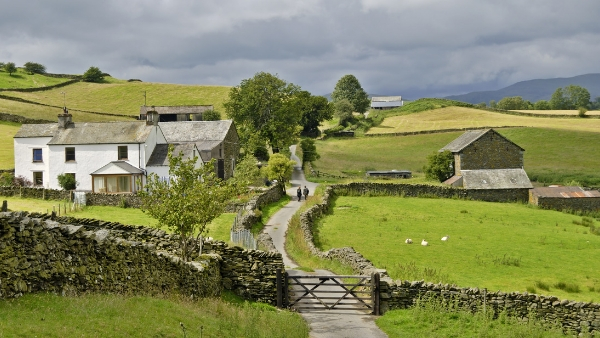Author
Countless farming families structure their businesses as partnerships. This gives them the flexibility to agree the terms on which that business will operate, with the Partnership Act 1890 only stepping in to assist in the absence of agreement. Too often, however, farming partners fail to record their arrangements in a written partnership agreement, which can lead to unexpected outcomes if a dispute arises. The costly and divisive battle which occurred in the recent case of Wild v Wild [2018] provides a salutary reminder of this risk.
Farming partnerships usually differ from other trading partnerships, such as GPs practices, vets etc. as a farming partnership’s most valuable asset is the farm itself. When partnerships are formed or partners are brought into the business with little thought given to the structure of the partnership and its assets, unintended consequences can ensue. Is the farm a partnership asset? Identifying what is and is not an asset of the partnership is one of the most important questions; it is also one of the most difficult.
The case
Ben Wild had farmed Bearnd Hall Farm since 1965, comprising a house, bungalow and land. Ben and his wife Jean lived in the farmhouse and one of his sons, Malcolm and his wife Abigail, lived in the bungalow. Ben also had two other children.
In 1978 Ben brought his eldest son Malcolm, then 16, into partnership. There was no written partnership agreement. In 1994, the younger son, Gregory, also joined. The most historic set of accounts that could be found, dating back to 1989, showed a balance sheet entry on the fixed asset schedule of “property: £40,750”.
In 1992 Malcolm and Abigail spent money modernising and extending the bungalow. In 2003 Ben died leaving all of his property to Jean. The brothers continued in partnership, but it ended acrimoniously in 2015 with Gregory applying to the Court to wind up the partnership and deal with all the accounts and inquiries. The issue that arose was whether the farm, including the bungalow, was a partnership asset. If it was then Malcolm and Gregory would stand to share in its value on the dissolution of the partnership. If it was not, then it would be owned entirely by Jean.
This case is not new law, but it is a stark reminder of the difficulties of identifying partnership assets, the importance of doing so and also the need to get the structure of any partnership right from the outset; a stitch in time saves nine.
Agreement or acceptance
The issue was whether Ben intended the farm to become a partnership asset, when he took Malcolm into partnership in 1978. Ben had long since died. One partner cannot unilaterally cause their property to become a partnership asset. The law states that there must be agreement or acceptance by the other partners.
Such agreement does not have to be expressed; it can be implied. However, the Courts only imply terms into agreements in order to give business efficacy to the partnership agreement.
Any farming partnership can operate very effectively without land actually being a partnership asset. Simply because a partnership uses land, does not mean that it has to be implied that it is a partnership asset.
The Court has to be persuaded that is what the partners agreed, i.e. that Ben brought the farm into the partnership in 1978 and Malcolm agreed and accepted that.
Value shown in accounts
So what about the reference to £40,750 in the accounts? Although it was found on the evidence probably to have been a reference to the farm, as previous case law has shown, the fact that the value appears in the accounts is not determinative of whether something is a partnership asset. In this case, like so many others, the accounts had been inherited from a previous firm of accountants.
From experience, the entries on the accounts are rarely scrutinised and there is little appreciation of what the entries actually mean. The focus is on whether there is any tax to pay in any year. Often the inclusion or otherwise of an item in the accounts depends on availability of tax relief and no one considers underlying ownership issues.
The fact that an item is included in signed-off accounts for decades does not mean that the item is transferred into the accounts on dissolution, or that it is to be treated as an asset of the partnership, if that is not otherwise appropriate. However, if considering all the evidence as a whole, it is appropriate to conclude that the partners agreed it was a partnership asset, then the accounts reflect the true position. The inclusion in the accounts is only part of the evidence to be considered. It may be an important and powerful part, but there may also be many other reasons why it is included, other than due to an agreement that it is a partnership asset.
The decision
Returning to the events of 1978, Malcolm was at that stage only 16. The family had received advice that it would be tax efficient to make him a partner. In the litigation the parties had agreed that the only time the farm might have become an asset of the partnership was in 1978 and the Court decided that at that time, Ben did not intend to give up the ownership of the farm and for it to become an asset of the partnership. It therefore remained the property of Jean.
Improvements to property
Wild v Wild also provided the classic example of where a separate property, the bungalow, was substantially improved by one member of the family, but it stood on land belonging to another (to Jean). Who owned the bungalow? Malcolm, being the one who had spent the money, brought a claim based on proprietary estoppel, that he had spent substantial funds on the bungalow in reliance upon the assurances from his parents, that it would be his. He was successful in that claim and the Court ordered that the beneficial interest in the bungalow be transferred to him and his wife.
The case highlights the difficulties of trying to decide the intention of the parties 40 years ago, where a key individual is no longer alive. It illustrates the divisive battle that can arise if intentions are not properly documented. It also shows the importance of carefully considering what is and is not on the balance sheet and the legal implications of that.
Keeping document up to date
Even partnerships which have a partnership agreement should dust off and review that agreement regularly. Many such agreements that pass my desk are not worth the paper they are written on and clients often know this even before they are told. Those that do pass muster must still be regularly reviewed and checked for consistency against the accounts, Wills and any arrangements put in place for tax purposes.
Partners rarely understand that where something is found to be “an asset of the partnership” it is no longer theirs; it belongs to the partnership. That can often come as quite a shock.

